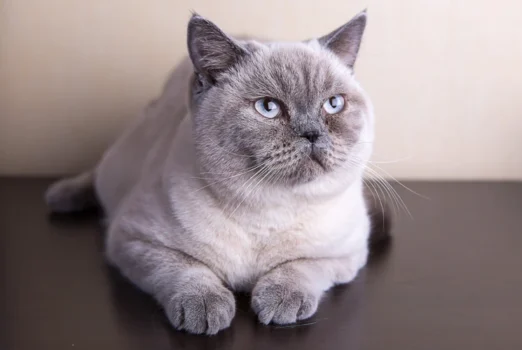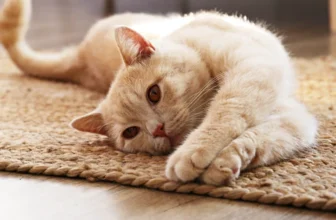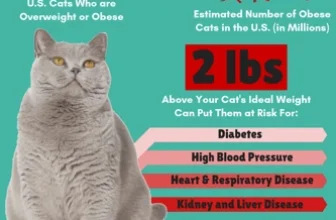As a loving owner of an American Shorthair, you want to ensure that your feline friend is healthy and happy. One crucial aspect of your cat’s health is maintaining a proper weight. However, determining whether your American Shorthair is at a healthy weight can be challenging. This is where the Body Condition Score (BCS) comes in. Understanding your cat’s BCS is essential to weight management and overall health. In this article, we will dive into what the BCS is, how to assess it, and why it matters. So, let’s start uncovering the secrets of the BCS scale!
What is the Body Condition Score?
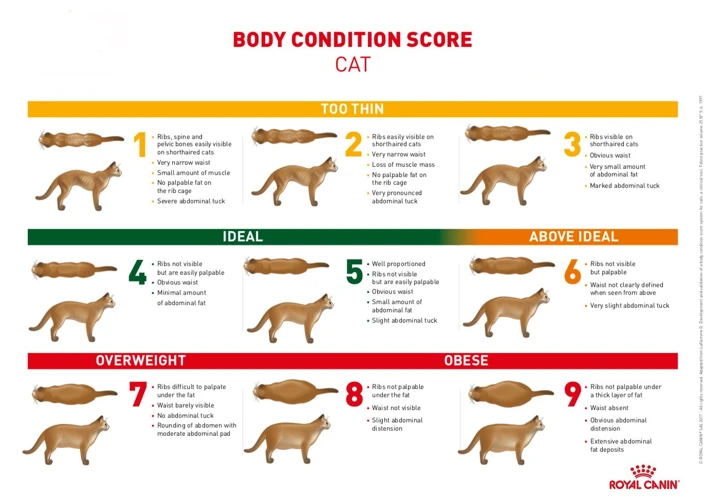
Understanding your American Shorthair’s Body Condition Score (BCS) is essential for maintaining their overall health and well-being. While many pet owners may assume that their cat looks healthy based on their appearance, weight management is more than skin deep. The BCS measures the amount of body fat that your cat has to help ensure that they are at a healthy weight. By understanding this score, you can make informed decisions about their diet and exercise regimen. This article will discuss the importance of the BCS, the 9 Point Scale, and how to assess your American Shorthair’s score. Additionally, we will provide tips for weight management, common misconceptions, and the importance of maintaining a proper BCS.
Why Is It Important?
Maintaining a healthy Body Condition Score (BCS) is crucial to the overall health and longevity of your American Shorthair. A BCS can help determine if your cat is overweight, underweight, or at an ideal weight. As a cat owner, it is important to understand why keeping your cat at an ideal weight is important for their health.
Why is it important to maintain a healthy BCS for American Shorthairs?
| Reasons to maintain a healthy BCS: |
|---|
| Obesity-related health issues: Being overweight can lead to several health issues, such as diabetes, heart disease, and joint problems in cats. These health issues can severely impact the quality of life of your American Shorthair and may even shorten their lifespan. |
| Maintaining a healthy weight: Just like humans, maintaining a healthy weight is important to maintain a healthy lifestyle in cats. A healthy weight can ensure that your American Shorthair stays active and maintains good overall health. |
| Preventative measures: Maintaining a healthy weight through proper diet and exercise can prevent a range of health issues in cats. By preventing these issues, you can save on expensive vet bills and ensure your American Shorthair lives a long and healthy life. |
By maintaining a healthy BCS, you can enjoy your time with your American Shorthair for years to come. Additionally, taking measures to achieve and maintain a healthy weight can help your cat avoid obesity-related health issues and improve their overall wellbeing.
If you need help managing your American Shorthair’s weight, read our article on weight loss tips for American Shorthairs, and learn about proper portion control, high-protein vs low-calorie diets, indoor activities and exercises, and healthy treats for weight loss.
What are the 9 Point Scale?
Understanding the Body Condition Score of Your American Shorthair – A Key to Weight Management
What are the 9 Point Scale?
The 9 Point Scale, also known as the BCS scale, is a tool used by veterinarians and cat owners to assess the body condition of cats. The scale ranges from 1 to 9 and is based on levels of body fat and muscle mass. A score of 1 means that the cat is severely underweight, while a score of 9 means that the cat is severely overweight.
To understand the scale in more detail, here is a breakdown of each level:
| BCS Score | Description |
|---|---|
| 1 | Emaciated – No palpable fat, prominent bony structures. Severe muscle loss. |
| 2 | Very thin – No palpable fat, bony structures evident. Some muscle loss. |
| 3 | Thin – Minimal palpable fat, with palpable bony structures. Slight muscle loss. |
| 4 | Underweight – Palpable fat over bony structures. Minimal muscle loss. |
| 5 | Ideal – Palpable fat over bony structures. Muscle mass and waist line are visible. |
| 6 | Overweight – Pads of fat over bony structures. Waist difficult to notice. |
| 7 | Heavy – Large amounts of fat deposits over bony structures. Obvious abdominal distension. |
| 8 | Obese – Massive amounts of fat deposits over bony structures. Visual impairment and difficulty moving. |
| 9 | Severely obese – Excessive amounts of fat deposits over bony structures. Serious health risk. |
It is important to note that the ideal BCS score for an American Shorthair is 5. This is the healthiest weight and body condition for an adult cat of this breed. It is important to maintain this score to ensure your cat’s overall health and well-being.
Now that we understand the 9 Point Scale, let’s move on to how to assess your American Shorthair’s body condition score.
How to Assess Your American Shorthair Body Condition Score?
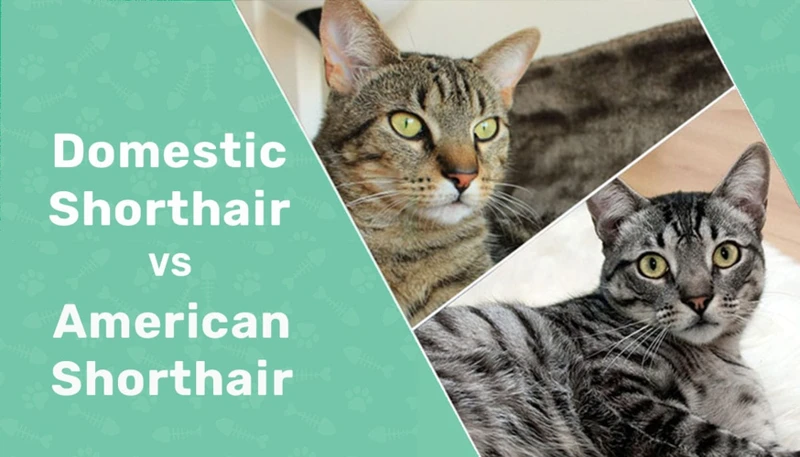
Assessing your American Shorthair’s body condition score (BCS) is an essential aspect of weight management and ensuring that your cat is healthy. Proper assessment allows you to determine if your cat is underweight, overweight, or at an ideal weight range. There are various methods to assess your cat’s BCS, including visual examination and physical examination. It is crucial to understand these methods and how to interpret the results to maintain your American Shorthair’s healthy weight. Let’s dive into the details in the sections below.
To learn more about weight management for American Shorthairs, check out our article on portion control and exercise, and find out about high protein vs. low-calorie diets and the health issues related to obesity in American Shorthairs. Also, read our tips on exercise and dietary changes to help maintain a healthy BCS in your cat.
Visual Examination
When assessing your American Shorthair’s body condition score (BCS), a visual examination is a useful starting point. Here are some steps to follow:
- Step 1: Look at your cat from above. A cat with an ideal BCS will have an hourglass figure, where the waist is narrower than the rib cage and hips.
- Step 2: Feel the ribs. Place your hands on your cat’s rib cage and run your fingers along the sides. You should be able to feel the ribs without pressing too hard. If you can’t feel them, your cat may be overweight.
- Step 3: Check the abdomen. Look at your cat’s belly from the side. An overweight cat will have a sagging belly that may hang low to the ground. A cat with an ideal BCS will have a slightly tucked-in waist when viewed from the side.
- Step 4: Look at the backbone. When you run your hands over your cat’s backbone, it should be easy to feel the bumps of each vertebra. If the backbone is hard to feel, your cat may be overweight.
It’s important to note that a visual examination is just a first step, and a physical examination is necessary for a more accurate assessment of your cat’s BCS. Nevertheless, visual examination is a quick and easy way to get a general idea of your cat’s weight. If you have concerns about your cat’s weight, consult your veterinarian for a professional assessment and advice on weight management.
Physical Examination
During a physical examination, you will need to palpate your American Shorthair’s body to determine the location of fat deposits. Start by feeling for your cat’s ribs. You should be able to feel each rib with minimal pressure, and they should be spaced evenly without any fat covering them.
Next, feel for your cat’s spine. You should be able to feel each vertebrae without pressing too hard, and they should be spaced evenly. If you can’t feel your cat’s spine or have to press deeply to do so, then it is an indication that your cat may be overweight or obese.
Palpate your cat’s abdomen to see if it is round and protruding, or if it feels firm and toned. An overweight or obese cat will have a soft, round belly that may sag down towards the floor. A healthy cat will have a toned and firm belly that isn’t too big or too small.
Observe your cat’s posture to see if it looks natural or unnatural. An overweight or obese cat may have an unnatural posture that is caused by too much weight being placed on their joints. They may also have difficulty moving around or grooming themselves due to their weight.
Check your cat’s skin and coat to ensure that they are healthy and free of any complications. Overweight or obese cats may have a greasy or matted coat, which can be indicative of skin infections.
By performing a physical examination on your American Shorthair, you can determine whether your cat’s body condition is healthy or not. A healthy cat should have a toned body, without any excess fat covering their ribs or spine.
How to Interpret the Results?
After conducting visual and physical examination, you will end up with a score ranging from 1 to 9. This score will indicate the body condition of your American Shorthair. But, what does this score actually mean? How to interpret it? Let’s take a look at the following table to better understand the interpretation of each score:
| Score | Condition | Description |
|---|---|---|
| 1 | Emaciated | Extremely thin, bony prominences visible, no palpable fat |
| 2 | Very Thin | Thin with bony prominences palpable, minimal fat |
| 3 | Thin | Body outline apparent with slight waist and minimal fat covering the ribs |
| 4 | Ideal | Well-proportioned, waist easily noted, ribs palpable without excess fat covering |
| 5 | Overweight | Ribs palpable with difficulty, moderate fat covering, waist poorly discernable |
| 6 | Heavy | Ribs not palpable, heavy fat cover, or a pendulous abdomen |
| 7 | Very Heavy | Marked abdominal distension, heavy fat cover over thorax, spine difficult to palpate |
| 8 | Morbidly Obese | Grossly overweight, no palpable ribs, heavy fat deposits on extremities and back |
| 9 | Grossly Obese | No bones palpable under very heavy fat cover, massive abdominal distension |
As an American Shorthair owner, you should aim to keep your pet in the range of 4 to 5. This will ensure that your cat is at an ideal weight, and not overweight or underweight. If your cat’s score indicates that it is overweight or obese, it’s important to implement changes in its diet and exercise regimen to help it achieve an ideal BCS.
Weight Management for Your American Shorthair
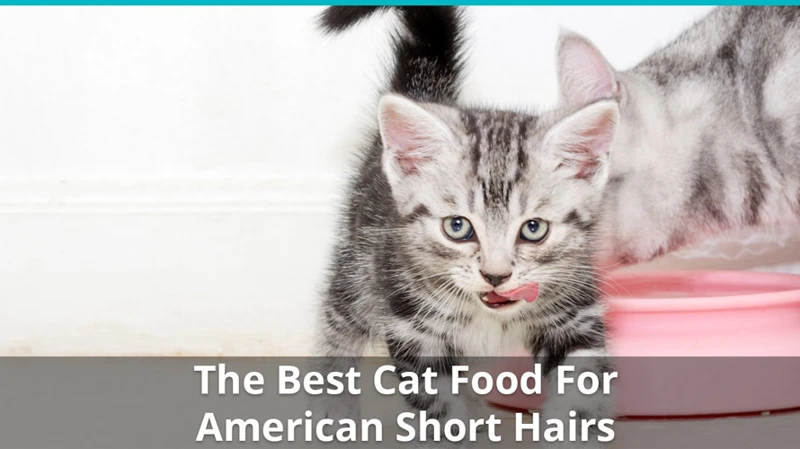
Maintaining a healthy weight is critical for your American Shorthair’s overall health and well-being. Obesity in cats is a common problem, which can lead to several health issues such as diabetes, heart disease, joint problems, and a decreased lifespan. It is essential to manage your cat’s weight effectively. In this section, we’ll discuss some tactics and strategies to help you in achieving your American Shorthair’s healthy weight goals. From dietary changes to regular vet visits – let’s dive into the world of weight management for your furry friend.
Dietary Changes
Maintaining a healthy diet is crucial for managing your American Shorthair’s body condition score. Here are some dietary changes you can make to keep your cat healthy and at an ideal weight:
- Portion Control: Consistently feeding your cat the same amount of food can lead to overeating and weight gain. It’s important to measure out your cat’s food and adjust it based on their activity level and body condition score.
- Switch to High-Protein Cat Food: High-protein cat food is important for maintaining muscle mass and keeping your cat feeling fuller for longer periods of time. Look for cat food with meat as the first ingredient rather than fillers like corn or wheat.
- Limit Treats: Treats can quickly add up in your cat’s daily calorie intake. It’s important to limit the number of treats your cat receives and opt for healthier options like freeze-dried meat treats or small pieces of cooked chicken.
- Introduce Wet Cat Food: Wet cat food can help your American Shorthair stay hydrated and feel fuller for longer. Plus, it can be easier for cats to lose weight on a wet food diet because it contains fewer calories per serving than dry food.
- Offer More Fiber: Fiber can help promote healthy digestion and increase feelings of fullness. Consider adding small amounts of cooked vegetables like pumpkin or green beans to your cat’s diet. Just be sure to introduce them slowly to avoid stomach upset.
Remember to always consult with your veterinarian before making any dietary changes. They can provide guidance on the best diet for your American Shorthair based on their individual needs and body condition score.
Activity Level and Exercise
Maintaining an optimal BCS in your American Shorthair also involves increasing their activity level and making sure they get enough exercise. Just like with humans, lack of physical activity can greatly contribute to weight gain and obesity in cats. Here are some tips to help your feline friend stay active:
| Tip | Description |
| Interactive toys | Provide your cat with toys that stimulate their natural hunting instincts, such as feather wands or laser pointers. This encourages them to move around more and engage in physical activity. |
| Cat trees and shelves | Invest in a cat tree or shelves for your cat to climb and play on. This not only provides them with exercise but also a space of their own to relax and feel secure. |
| Outdoor time | If your American Shorthair is allowed outside, ensure they have plenty of space to roam and play. However, make sure they are supervised and safe from any potential dangers. |
| Playtime with humans | Set aside time each day to play with your cat, whether it’s with a toy or simply chasing them around the house. This not only keeps them active but also strengthens the bond between you and your furry friend. |
| Food puzzles | Food puzzles are toys that dispense food when your cat interacts with them. This provides mental stimulation and encourages physical activity in addition to satisfying their hunger. |
It’s important to note that each cat has their own unique personality and activity level. Some may be more energetic and require more exercise, while others may be more laid back. Make sure to tailor your cat’s exercise routine to their individual needs. Additionally, always consult with your veterinarian before starting any exercise routine as certain health conditions may affect your cat’s ability to exercise.
Vet Visits
Regular vet visits are an essential aspect of maintaining a healthy body condition score (BCS) for your American Shorthair. During your cat’s checkup, the vet will conduct a thorough physical examination, including an assessment of your cat’s BCS. These regular appointments will help you keep track of your cat’s weight and BCS, ensure that any potential health issues are identified early, and allow your vet to recommend a suitable treatment plan.
1. Keeping Track of Progress: With each vet visit, the vet will conduct a visual and physical examination to assess your cat’s BCS. They will also weigh your cat to monitor any progress in weight management. It’s important to keep a record of your cat’s BCS and weight over time, so that you can identify any patterns or changes that need to be addressed.
2. Recommendations for Weight Management: If your cat’s BCS is too high, your vet may recommend changes to their diet or exercise routine to help your American Shorthair maintain a healthier BCS. Your vet may also recommend specific types and amounts of food to feed your cat and provide tips for managing their weight effectively.
3. Treating Health Issues: If your vet identifies any specific health issues related to your cat’s weight or diet, they may recommend additional tests or treatments to manage the problem. This could include prescribing a special diet or medication to help your cat lose weight or manage any underlying health conditions.
4. Identifying Potential Health Issues Early: Regular vet visits can help detect any potential health problems before they become advanced or difficult to treat. By monitoring your cat’s BCS and weight, your vet can identify any problems early and provide a plan of action to address them.
Whether your American Shorthair is overweight or underweight, regular vet visits are essential for maintaining a healthy BCS. By working with your vet, keeping track of your cat’s BCS and weight, and making any necessary adjustments to their diet and activity levels, you can help your cat achieve and maintain a healthy weight for a long and healthy life.
Common Misconceptions About BCS
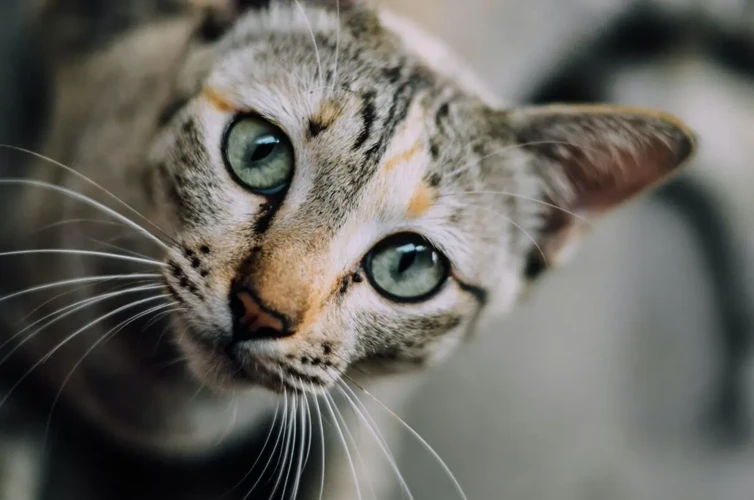
When it comes to managing the body condition score (BCS) of American Shorthairs, there are several common misconceptions that can hinder progress. These misconceptions often lead to confusion and frustration among cat owners and can even result in the opposite desired effect. It is important to understand and address these misconceptions in order to successfully manage your cat’s weight and improve their overall health and wellbeing. Let’s take a closer look at some of the most prevalent misconceptions about BCS in cats.
Misconception 1
One of the most common misconceptions about the Body Condition Score (BCS) is that a score of 5 is always the healthiest for every cat breed. However, this is not necessarily true for American Shorthairs.
Table: Ideal BCS Scores for Different Cat Breeds
| Cat Breed | Ideal BCS Score |
| ————————– | ——————————– |
| Siamese | 4-5 |
| Persian | 5-6 |
| Maine Coon | 5-6 |
| American Shorthair | 4-5 |
As seen in the table above, while an ideal BCS score for American Shorthairs is 4-5, this may not be the case for other cat breeds. For example, Persian cats, known for their luxurious and long coats, may require a slightly higher BCS of 5-6 to maintain a healthy weight and prevent illnesses associated with being underweight. On the other hand, Siamese cats, known for their lean build and muscular bodies, may require a slightly lower score of 4-5.
It is important to understand that the ideal BCS score may differ depending on the cat breed, age, and individual factors such as metabolic rate and activity level. It is best to consult with a veterinarian for a customized weight management plan for your American Shorthair.
Misconception 2
One common misconception about BCS is that a cat’s weight can be judged by only looking at the number on the scale. However, this is not entirely accurate. Another misconception regarding BCS is that obesity is only caused by overfeeding and lack of exercise. While these factors can contribute to excessive weight gain, there are other underlying issues that can cause obesity in American Shorthairs.
Misconception 2: Overfeeding and lack of exercise are the only causes of obesity in American Shorthairs.
It is true that overfeeding and a sedentary lifestyle are significant contributors to obesity in American Shorthairs. However, there are other factors that can cause excessive weight gain, such as genetics and underlying medical conditions. Certain medications, such as corticosteroids, can also lead to weight gain. It is essential to rule out any underlying health issues before starting a weight management regimen.
To combat this misconception, it is crucial to consult with a veterinarian to determine if there are any underlying health concerns that need to be addressed. Additionally, a comprehensive weight management plan should include a balanced diet, exercise routine, and regular check-ups with a vet.
Possible list:
– Overfeeding and lack of exercise are significant contributors to obesity in American Shorthairs but not the only causes of excessive weight gain.
– Genetics and underlying medical conditions, such as hypothyroidism or diabetes, can also lead to obesity in cats.
– Certain medications, such as corticosteroids, can cause weight gain in American Shorthairs.
– A comprehensive weight management plan should include a balanced diet, exercise routine, regular vet visits, and addressing any underlying health issues.
The Importance of Maintaining a Healthy BCS
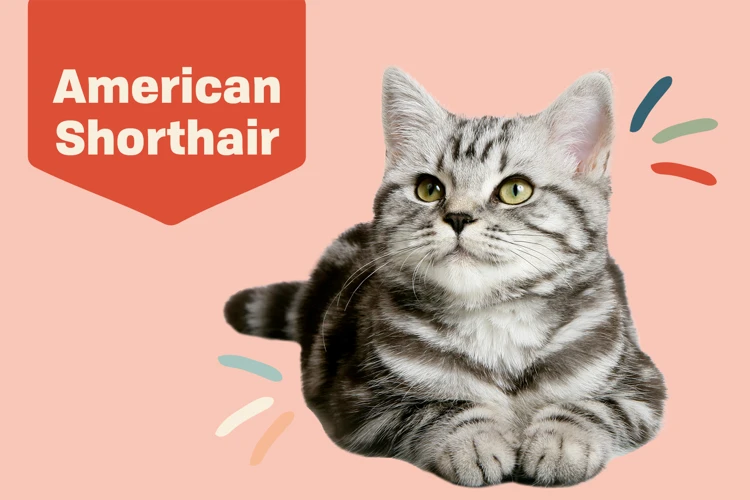
Maintaining a healthy Body Condition Score (BCS) is crucial to ensuring your American Shorthair lives a long and healthy life. Obesity can lead to various health issues such as diabetes, arthritis, heart problems, and even cancer. It can severely impact their quality of life and reduce their lifespan.
Preventing Health Issues: Obesity is a significant contributor to several health problems. When an American Shorthair is overweight, it puts unnecessary pressure on their joints, leading to arthritis. It also causes insulin resistance, which can result in diabetes. This condition can be challenging to manage and can shorten your cat’s lifespan. Obese cats are more likely to have heart problems, liver disease, and cancer. By maintaining a healthy BCS, you can prevent your American Shorthair from developing these medical conditions.
Improving Quality of Life: Obese cats may face difficulty performing activities they once enjoyed, such as running, jumping, or playing. They may also have a limited range of motion and experience joint pain. By keeping your cat at a healthy weight, you can improve their quality of life and increase their mobility, making it easier for them to be active and enjoy their daily activities.
Increasing Lifespan: Obesity can shorten your cat’s lifespan. Overweight cats have a higher risk of developing several fatal diseases. Generally, cats that are in good shape and have a healthy BCS tend to live longer than overweight cats. Healthy cats tend to recover more quickly from surgeries or illnesses. Keeping your cat at a healthy weight can contribute to a longer and healthier life.
Reducing Vet Bills: Preventative care is often less expensive than treating an illness. Since obesity can lead to medical conditions, maintaining a healthy BCS can reduce the number of vet visits your American Shorthair requires. This can save you a significant amount of money on veterinary bills, which can add up quickly.
Maintaining a healthy BCS for your American Shorthair is vital to ensuring they live a long and healthy life. By preventing health issues, improving their quality of life, increasing their lifespan, and reducing vet bills, you’re not only saving money but also enhancing the bond between you and your furry friend.
Frequently Asked Questions
As with any topic related to the care of our beloved pets, there are always questions that arise. Understanding the body condition score of your American Shorthair is no exception. To help address some of the most common questions pet owners may have, we’ve compiled a list of frequently asked questions. Whether you’re curious about the ideal BCS score or how often to get your cat’s BCS checked, we’ve got you covered. So, let’s dive in and clear up any perplexities you may have.
What is the Ideal BCS Score?
An ideal Body Condition Score (BCS) for your American Shorthair (ASH) cat is essential for their overall wellbeing. The BCS scale ranges from 1-9, with 1 being emaciated and 9 being obese. The perfect BCS score for an ASH ranges between 4-5 points, which indicates a healthy and well-muscled body.
Here is a breakdown of the ASH BCS Scale:
| BCS Score | Appearance | Palpable Fat |
|---|---|---|
| 1 | Emaciated | No palpable fat |
| 2 | Thin | Minimal palpable fat |
| 3 | Body Score Ideal | Palpable fat over the ribs |
| 4 | Chubby | Patches of fat begin to form |
| 5 | Overweight | Distinct patches of fat and prominent abdomen |
| 6 | Fat | Large patches of fat throughout the body |
| 7 | Obese | Large deposits of fat throughout the body, the abdomen distended |
| 8 | Very Obese | Extreme amount of palpable fat with abdominal distention |
| 9 | Morbidly Obese | Enormous visible and palpable fat deposits with abdominal distention |
You can tell if your ASH falls within a healthy weight range by observing their body shape and feeling for palpable fat. If you can’t feel their ribs or if they have large fat pads over their hips or spine, then they might be overweight. It’s important to monitor your cat’s BCS regularly to maintain their overall health and wellbeing.
What Causes Obesity in American Shorthairs?
Obesity in American Shorthairs is mainly caused by a combination of overeating and a lack of physical activity, just like in humans. However, there are some specific factors that can lead to obesity in American Shorthairs:
- Genetics: Just like some humans are more prone to weight gain than others, certain cat breeds, like the American Shorthair, are more prone to obesity due to genetics.
- Diet: Feeding your American Shorthair a diet that is too high in calories or carbohydrates, or feeding too many treats, can lead to weight gain and obesity. It’s important to choose a high-quality cat food that is appropriate for your cat’s age, activity level, and health needs.
- Inactivity: American Shorthairs that do not get enough exercise are more likely to become overweight. Indoor cats are especially prone to inactivity, so it’s important to provide them with plenty of opportunities to play and climb.
- Aging: As American Shorthairs age, their metabolism slows down, which means they burn fewer calories. This makes it easier for them to gain weight if their diet and activity level are not adjusted accordingly.
It’s important to keep in mind that obesity in American Shorthairs can lead to serious health problems, such as diabetes, joint problems, and heart disease. That’s why it’s important to take steps to prevent obesity and maintain a healthy weight for your furry friend.
Can BCS Affect the Lifespan of My American Shorthair?
Maintaining a healthy Body Condition Score (BCS) is essential for your American Shorthair’s overall well-being. A cat’s weight is directly related to their lifespan, and being overweight or obese can significantly affect their longevity. Here are some ways in which BCS can impact your American Shorthair’s lifespan:
- Risk of Chronic Diseases: Carrying excess weight puts a strain on your cat’s organs and can lead to a higher risk of chronic diseases such as diabetes, arthritis, and heart disease. These conditions can severely impact your cat’s lifespan and quality of life.
- Reduced Mobility: An overweight or obese American Shorthair may have difficulty moving around and being active, leading to reduced mobility. This lack of physical activity can cause muscle loss, making movement even more challenging, and affect their lifespan.
- Weakened Immune System: Obesity can weaken your cat’s immune system, making them more susceptible to infections and diseases. This can lead to a shorter lifespan and increased medical expenses for treatments and medications.
It is essential to monitor your American Shorthair’s BCS regularly and maintain a healthy weight. Feeding them a balanced diet and providing regular exercise is crucial in preventing obesity and improving their lifespan. Regular check-ups with your veterinarian can also help monitor your cat’s BCS and prevent any potential health issues.
How Often Should I Get My Cat’s BCS Checked?
It is important to regularly check your American Shorthair’s body condition score to ensure they are maintaining a healthy weight. Experts recommend getting your cat’s BCS checked at least once every 6 to 12 months to stay on top of any changes in their weight or body composition.
Some situations may require more frequent checks, such as if your cat has been diagnosed as overweight or obese, has recently undergone a dietary or lifestyle change, or if they have a medical condition that could affect their weight.
By regularly monitoring your cat’s BCS, you can catch any changes early on and adjust their diet and exercise routine accordingly to prevent health complications down the line. If you’re not sure how to assess your cat’s BCS, it’s always a good idea to consult with your veterinarian for guidance.
Conclusion
In conclusion, understanding your American Shorthair’s Body Condition Score is essential for their overall health and wellbeing. By assessing their BCS regularly and making necessary changes to their diet and exercise routine, you can help your feline friend maintain an ideal weight and prevent obesity-related health issues.
Remember, the BCS is not just about appearance, but it is a measure of your cat’s overall health. It’s important to work with your veterinarian to ensure that your cat is in optimum health and has a healthy BCS.
By making small adjustments to your cat’s diet and exercise routine and prioritizing regular vet visits, you can help your American Shorthair live a long, healthy, and happy life. Keep in mind that maintaining a healthy BCS is a lifelong process, and doing so requires dedication and commitment.
Overall, by following the steps outlined in this article, you can better understand and manage your American Shorthair’s BCS, promoting their wellbeing, and strengthening the bond between you and your furry companion.
Frequently Asked Questions
What is the ideal BCS score?
The ideal BCS score for an American Shorthair is between 4 and 5, which indicates a healthy weight and body condition.
What causes obesity in American Shorthairs?
The primary cause of obesity in American Shorthairs is overfeeding and lack of exercise. Other factors include age, genetics, and certain medical conditions.
Can BCS affect the lifespan of my American Shorthair?
Yes, maintaining a healthy BCS can positively impact the lifespan of your American Shorthair. Research has shown that overweight or obese cats have a shorter lifespan than cats who maintain a healthy weight.
How often should I get my cat’s BCS checked?
It is recommended to have your cat’s BCS checked at each vet visit or exam, which is typically once a year. However, if you notice any significant changes in your cat’s weight or body condition, it is important to schedule an appointment with your vet as soon as possible.
Why is it essential to maintain a healthy BCS for my American Shorthair?
Maintaining a healthy BCS for your American Shorthair helps improve their overall health, prevent diseases, increase their lifespan, and enhance their quality of life.
What are the consequences of an unhealthy BCS score?
An unhealthy BCS score, such as overweight or obese, can put your American Shorthair at risk for various health problems, including diabetes, arthritis, heart disease, and respiratory issues.
Is it possible to improve my American Shorthair’s BCS score?
Yes, it is possible to improve your American Shorthair’s BCS score through proper dietary changes, increased physical activity, and regular vet visits. However, it is important to consult with your vet before making any significant changes to your cat’s diet or exercise routine.
Can underfeeding also impact my American Shorthair’s BCS score?
Yes, underfeeding can also impact your American Shorthair’s BCS score. A BCS score of 1 or 2 indicates your cat is underweight and may lack proper nutrition, which can also lead to health issues.
What are some signs that my American Shorthair may have an unhealthy BCS score?
Some signs that your American Shorthair may have an unhealthy BCS score include visible ribs or spine, loss of muscle tone, reluctance to exercise, and difficulty grooming themselves.
Can my American Shorthair’s BCS score fluctuate?
Yes, your American Shorthair’s BCS score can fluctuate due to various factors such as aging, illness, and seasonal changes. It is important to monitor your cat’s BCS score regularly and make necessary adjustments to their diet and exercise routine.

